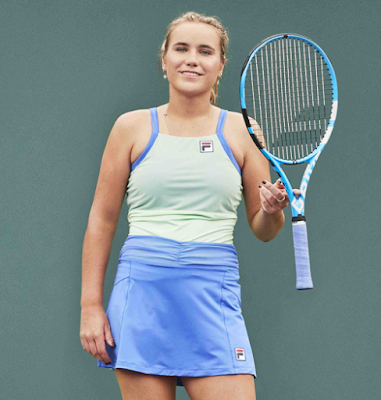
By Mark Scoop Malinowski
(This feature appears in the March/April issue of FINAL Magazine.)
A phenomenon of nature is the instinct of the alpha wolf to sense who his successor in the wolfpack will be. When that determination is made, the alpha wolf doesn’t try to eliminate the rival or fight him off, he accepts his dominance has expired and departs the pack voluntarily.
The alpha wolf of the tennis world reluctantly exited the Australian Open under controversial circumstances this year – which we will not rehash for this feature. Instead the focus will be on six hunters and their diverse quests to dominate the Greenset cushion acrylic hard courts in Melbourne…
The All-American girl who spectacularly won the women’s singles title in Melbourne just two years ago by beating Garbine Muguruza 46 62 62, seemed destined for stardom. “My dream has officially come true, I cannot even describe the feeling. I have worked so hard and I’m just so grateful to be standing here,” Sofia Kenin told the crowd after the victory. “Dreams come true. So if you have a dream, go for it, and it’s going to come true.”
The rubber-soled contessa also reached the Roland Garros final that year (defeated by Iga Swiatek) and her march to the WTA throne seemed destiny. Until suddenly Kenin sputtered. By the end of 2021, her tennis superpowers looked strickened by kryptonite. One of her main sponsors Fila even opted out of their partnership.
The big tennis investors were more attracted to the political grandstands and flamboyance of Naomi Osaka and the magical mystery ride of the enchanting London teenager Emma Raducanu.
So the almost “It” girl Kenin was left standing on the edge of the dance floor waiting and wondering, What happened? It has to be confusing and even insulting for Kenin to see Osaka earning a reported $52m in endorsement contracts and Raducanu signing deals left and right with Tiffany, Dior, Evian and British Airways after her US Open win. Kenin still has three sponsors including Pironetic, the small attire line founded by WTA player Tsvetana Pironkova, which has contracted Kenin for 2022 at a reported $150,000. But compared to Naomi and Emma it’s chump change.
Kenin’s failure to attract major corporate interest is perplexing. She has the natural, pretty, conservative, cheerleader look from those old 70s Brady Bunch or Happy Days TV shows. She’s spunky, sharp and wonderfully talented. But times have changed and most of the sports media darlings today are more involved in social media, public appearances and cultural activities. Outside of tennis, Kenin keeps a more low-profile off court image. Compared to the other WTA fame magnets, Kenin is your modern day Greta Garbo, practically a recluse. Maybe that old quote by Ion Tiriac about Mary Joe Fernandez also sums up Kenin: “She’s No. 4 in the world but nobody knows who the hell she is.”
The journey began for the Moscow, Russia-born Kenin at age five and she quickly established a reputation as a pint-sized girl wonder, playing exhibitions in South Florida with the likes of Venus Williams, Jim Courier, Anna Kournikova, Todd Martin, Jennifer Capriati and John McEnroe. I remember one of her early coaches told me her special talent was matched by extraordinary dedication and desire: “The other junior girls would show up fifteen minutes before their USTA tournament matches, Kenin would get there two hours early to practice and gain an edge.” The commitment paid off and Kenin entered the WTA in 2017 and advanced to the third round at US Open, losing 75 62 to Maria Sharapova. Kenin’s first title came in Hobart in early 2019 and her first major win was thumping Serena Williams out of 2019 Roland Garros. Kenin has won five WTA singles titles.
Kenin’s progression has stagnated. While her strokes and shotmaking equipment are still what they were, the difference now is she’s become “the hunted” instead of “the hunter.” Every opponent raises their desire and intensity a fraction to try to score a win over the former Australian Open queen. And Kenin’s mindset for matches now may not have the same urgent ferocity as she did before January 2020.
Kenin’s AO title defense in 2021 ended in the second round to the Estonian journeywoman Kaia Kanepi. Months later Kenin tried a change and stopped working with her father/coach Alex. The move didn’t pay off. She failed to reach a third round in any Grand Slam. By November, Kenin decided to reunite with her dad.
Having turned 23 last November, Kenin arrived in Australia this year as a motivated veteran with a sense of urgency to try to create a sequel of her Melbourne magic two years ago. But fierce resistance came early. Perhaps partly doomed by her unlucky no. 13 ranking, Kenin was jinxed from the start with a difficult first round foe in Madison Keys, who had just won a singles title in Adelaide the week prior (her first title since 2019). The 26-year-old Keys had also beaten Kenin in their last two meetings, both on hard court (Kenin won their first meeting on clay in Rome). The former US Open finalist who is based just a few hours north of Kenin in Orlando, FL, bounced Kenin back home to Pembroke Pines with a 76 75 win, rocketing 31 winners and fifteen aces, looking more like her former ranking of no. 7 than the current 51.
If Kenin’s second Grand Slam title and her longtime stated goal of becoming No. 1 remains forever elusive from her grasp, at least this methodical baseliner, once-ranked no. 4 in the world (and now ranked 95 after Australian Open), can be comforted by the memories of her glory days and her wonderful ability to stroke, strike, smack and smash a yellow sphere over a net. Of course, Kenin’s destiny is not beholden to the doubters and skeptics. She has the fortitude and competitive wiring to revive her inner champion at any time. All she needs is that special spark or inspiration to light her fire again… that igniting could even come from something totally random like hearing Jim Morrison and the Doors on her car radio…
… The time to hesitate is through
No time to wallow in the mire
Try now we can only lose
And our love become a funeral pyre
… Come on, baby, light my fire
Come on, baby, light my fire
Try to set the night on fire, yeah
—————————–
Stefan Kozlov first appeared on the ATP circuit as a highly-touted American junior with expectations of one day joining Federer, Nadal and Djokovic at the top. The USTA, Head and Nike were impressed by Kozlov’s superior touch, feel, ball control and competitive and invested in his pro career.
He was invited to play the historic grass courts of Newport, Rhode Island at the Hall of Fame Championships in 2013 as a fifteen-year-old wildcard ranked 1472 in the world. On stadium court, first match on during a perfect July sunny Newport late morning, the kid who looked more like a ballboy than a competitor, stunned the crowd by matching shot for shot with Polish veteran Michael Przysiezny, who was ranked 113. Kozlov stole the show but in the end lost the marathon 36 76 (11-9) 46.
By 2017, Kozlov was ranked 116 in the world and if he could have beaten Donald Young in the first round of Indian Wells he would have entered the top 100 for the first time. But the 75 76 loss on stadium court in the Southern California desert to the 60th ranked Young, precipitated a long slump for Kozlov. Inconsistent results and bad losses, even to some little known college players in lower level money tournaments would eventually plummet Kozlov’s ranking to 550. The $50,000-a-year Nike contract would lapse. The Porsche and USTA financial support would also disappear. Kozlov hit rockbottom and even had to teach lessons in Florida to help with expenses to keep “the dream” alive.
The kid who some viewed capable of winning a Grand Slam as a teenager like Borg, Chang, Becker, Wilander, Sampras and Nadal was categorized as a bust. But why? What did they have that Kozlov, Kristian Pless, Julian Jean-Pierre, Daniel Elsner, Nicolas Pereira and other top ITF juniors didn’t?
“No weapons, no serve, no forehand, no firepower, he still plays like he’s in juniors” were the whispers that haunted Kozlov. But … “A champion is someone who gets up when he can’t,” former Heavyweight champ Jack Dempsey once said.
Kozlov was down and out and some thought finished at age 21. But his fortunes changed in late 2021. After losing first round in both the qualifying draw at US Open and then Kiev, Ukraine Challenger, Kozlov unexpectedly began to play the best tennis of his life, winning three ATP Challengers – in Columbus (his first Challenger title in three years), Charlottesville and Champagne. The points compiled earned Kozlov a wildcard into the 2022 AO main draw, his first Grand Slam main draw.
When asked why and how the career resurgence happened in September, his dad Andrei Kozlov answered, “It’s a very good question. I think it’s because we start again from the beginning. Stefan was no. 2, 3 junior in the world. He used to beat Rublev and Zverev in juniors. Then in pros, it was slow progress. It was pressure for Stefan. If he lost a match, people say things. I put pressure on him, it kills my head. It kill his head too. Now after a few years away, he’s back home. We train together again. I’m not a super coach but I know what to say to him. Now he’s very strong. He’s hungry for tennis again. He doesn’t care what people say about him now.”
Kozlov flew to Australia without his father/coach, who remained in Florida to run his tennis academy in Pembroke Pines. Kozlov lost the momentum of 2021 and was beaten in his first two matches in 2022 to Flavio Cobolli and Denis Kudla which dropped his career ATP match record to 5-18.
A professional tennis player since 2013, Kozlov’s discovered his Grand Slam main draw debut would be against a 28-year-old, six-foot-six, big serving lefty from Czech Republic, who has won two ATP singles titles, 132 ATP singles matches, and even holds a winning record against Novak Djokovic (64 26 64 in Monte Carlo 2016, their only meeting).
Veteran Jiri Vesely, ranked 78 in the world and a regular Grand Slam competitor since 2013, would be outclassed and systematically dissected and overwhelmed by Kozlov’s pinpoint accuracy, deceptive power, lob winners, passing shots, phenomenal defense and perhaps also by those six, animated, arm-waving, fans who loudly cheered and chanted Kozlov through all three sets of the 75 63 64 masterpiece victory. After this career milestone first Grand Slam match win, Kozlov graciously and gratefully jogged to courtside and personally thanked each of his six supporters for their valued contributions to his commanding performance.
However the second round adversary for Kozlov would be a more formidable challenge. No. 7 in the world Matteo Berrettini won every match he played last year in Grand Slams (16), only losing to Novak Djokovic three times and defaulting due to injury in the Australian Open round of 16 to Stefanos Tsitsipas. This would be a big step up for Kozlov, who last year at this time was playing a small money tournament at Pro World Academy in Delray Beach, FL (Kozlov beat Christian Langmo in that final 62 62).
It’s only natural if Kozlov felt some intimidation from “The Italian Stallion” and the magnitude of the moment. He lost the first set 1-6 but adapted to the different pace and speed and outplayed Berrettini in the second, 6-4. The match was on now and the five-time ATP singles champion from Rome imposed his will on the youngster 6-4 6-1.
But Kozlov got a valuable taste of the tennis big time and he proved to himself that with more experience playing top ten juggernauts in major tournaments, it’s possible he can achieve and amass the bounties Berrettini has – and invade his way inside the top ten wolfpack…
Benoit Paire is one of the most aesthetic, smoothest operators in tennis. And he’s also one of the most eccentric, unfathomably confusing competitors you will ever see. A picture-perfect living art backhand winner or drop shot, or a temper tantrum fit for an insane asylum… this colorful, complex character can make Milos Raonic and Jannik Sinner look like mannequins. Only Benoit Paire could end up in a near fist fight after a match with Ivo Karlovic in Washington DC (he mocked Ivo all match in French to his box not knowing the Croat understands the language too.) For all of Paire’s flair, flare-ups and flowing artistry, he only owns three ATP singles titles and a losing record to show for his fourteen-year pro career. Many court observers justifiably wrote off the 32-year-old Paire as an impact player seasons ago.
Last year was particularly dreadful for Paire. He lost his last five matches of 2021 and finished a disastrous 14-32 overall. Racquets were smashed, cries of agony were screamed, some matches were even tanked. But the worst part Paire’s 2021 nightmare was that he lost in the first round a humiliating 21 times. Or was it being booted from the French Olympic team? “It was a shit year last year,” Paire admits.
The mind-exploding misery of 2021 carried over to 2022, as Paire lost both of his first round matches in Melbourne to Henri Laaksonen 64 36 25 RET and then in Adelaide to Thanassi Kokkinakis 46 06.
But the often fragile stylist would show he also possesses a will of iron and the predator skills of a lion. Paire received a much-needed confidence spark in his first round match vs. Thiago Monteiro as he beat the Brazilian lefty 64 36 75 26 75. Round two would be even more difficult as world no. 28 Grigor Dimitrov sought vengeance on Paire. Though two years younger than Paire, 30-year old Dimitrov has won over a hundred more ATP matches, five more titles and over $11m more in prize money, but he’s lost to Paire three of the four times they previously played.
Whatever strange tennis superiority Paire possessed over Dimitrov’s psyche would surface again in their latest duel. Paire looked like the former world no. 18 he once was in outhitting and outsmarting “Super G”, several times leaving the stunned Bulgarian shaking his head in disbelief at Paire’s cleverness. In the end, it was the bearded tennis artist, easily mistakable for a lumberjack or viking, who emerged victorious 64 64 67 76. Instantly, Paire’s career jumped out of the coffin, pumping with new energy and optimism.
Though only a second round win, it meant a lot more for Paire than anyone realized. He broke down in tears during his post match, on-court interview, turning around and bending over to hide the uncontrollable emotions. He regained his composure and while wiping away tears, said, “Last year was a shit year. This year started by testing positive (Covid). I isolate for seven days. It starts like shit again. But I’m here. I hang on. I played a big match today, one of my best matches since a long time. So for me it’s all positive. I’ve been criticized a lot. At one point, it weighs… and honestly, when I pull off a match like this… I have support here. The French fans… really there is nothing better.”
Paire’s two-match success was thwarted in the third round though by Stefanos Tsitsipas in four sets. Now ranked 56, Paire’s confidence tank has been refueled and he is back in position to become a top 20 elite player again. Who knows, with this completely unpredictable mad genius, the best of Paire may be yet to come. He may still figure out how to galvanize all his tennis wizardry, weapons, athletic beauty and produce even greater wins than that US Open upset of Kei Nishikori from two match points down in 2015 or the 2017 Madrid stunner vs. no. 3 Stan Wawrinka…
You watch one point of 21-year-old Sebastian Korda and you can see it all, the fluidity, the confident demeanor, the perfect technique, veteran poise, darting speed, the easy, striking power, and an elegance which is the cohesive glue of the entire unit.
The last American to win a Grand Slam was in 2003 at US Open by a 21-year-old Andy Roddick. Roddick likes what he sees so far in Korda: “I love his tone, I love the way he processes the game. He believes he should be here, which is a great sign for US tennis.”
At first Korda didn’t gravitate to the racquet sport that his dad Petr came within one match of being ATP world no. 1 in 1998. Initially, Sebi prefered shooting pucks at hockey nets. Then watching a live tennis match in New York City changed his mind. “I watched Radek Stepanek play Novak Djokovic in Ashe Stadium at US Open when I was nine years old (from the player box), my father was coaching Stepanek at the time. That’s when I realized I wanted to be a professional tennis player, not a hockey player.”
Petr took a patient, gentle approach with Sebi, he was not pushed like a tennis slave. Former top 100 ATP player Hugo Armando told me he remembers seeing Petr and Sebi train for years at their neighborhood El Conquistador Tennis Club in Bradenton and how casual and easy the practices were. The kid responded to his father’s unusual method and progressed at his own pace. Korda first made his own mark in tennis by winning a national 18s title and then the Australian Open boys title in 2018.
The graduation to the pro ranks took a couple of years of competing, learning and suffering in places like Antalya, Shymkent, and Biella in Futures and Challengers. The struggle of those two years could be symbolized by four close losses to a Russian named Dmitry Popko, (three were in finals). The 25-year-old Popko is currently ranked 177, Korda is no. 43 – and a steadily rising force.
Or an unstoppable force. A year ago, Korda won Quimper Challenger to break into the top 100. Then he beat Tsonga in Montpelier, Marin Cilic in Acapulco, Fognini, Karatsev and Schwartzman in Miami. Korda’s first ATP title came in Parma in May (def. Cecchinato 62 64). At Wimbledon Korda knocked off Alex DeMinaur, Antoine Hoang and Dan Evans before losing 10-8 in the fifth set to Karen Khachanov in round of 16. At the year-end Next Gen Finals in Milan, Korda won four matches before falling in the final to Carlos Alcaraz.
Already ahead of his dad’s ranking at the same age (Petr was ranked 59 at age 21 in 1989), Sebi seems on a path to the top 10, at least. In his Australian Open debut this year Korda beat world no. 12 Cam Norrie easily in the first round 63 60 64 and the talented French lefty Corentin Moutet 76 in the fifth in the second round.
Korda admits he draws motivation from seeing the half dozen other young Americans achieving quality results. “There’s always an American pushing going further in tournaments, so it’s inspiring for all of us,” said Korda. “It was great to see Taylor (Fritz) finishing the year the way that he did (as the top ranked American), he’s playing some incredible tennis. And Reilly (Opelka) playing (final) in Toronto (2021), Jenson Brooksby, Brandon Nakashima, Tommy Paul. I think there’s a little competitiveness in all of us and we’re all pushing each other and I think it’s a great thing for ourselves and American tennis in general.”
Though Korda’s third round AO match with Pablo Carreno Busta ended in four set defeat, his future holds many tantalizing possibilities.
And you surely must know by now that Petr Korda won the 1998 Australian Open and Sebi’s two pro golfer sisters Nelly and Jessica also won major golf titles in Melbourne and the next logical destiny of the youngest Korda is so obvious it doesn’t even need to be said…
The world no. 1 Ashleigh Barty won Wimbledon last year and Roland Garros in 2019 but her career would never be complete until she won her homeland’s Grand Slam the Australian Open. Finally this year Barty found fulfillment, exhibiting the most diverse, successful playing style in the women’s game. She became the first Aussie woman to win the Australian Open since unseeded Christine O’Neil won in 1978 (vs. Betsy Nagelson 63 76, the identical score of Barty’s title win vs Danielle Collins).
Former 1976 French Open finalist Harold Solomon lauded Barty’s mastery which saw her only lose one service game in the entire tournament: “Women’s tennis showcases athletic ability and ability to whack the ball. What is disappointing is the lack of variety demonstrated by everyone with the exception of Barty. Not very many slices or change of pace balls and virtually no drop shots which is still one of the most effective shots in tennis when executed well. I think back to the US Open a few years back and how Bianca Andreescu played, she really had the ability to continue to hit the ball under all circumstances but she hit an amazing amount of slices and drop shots and came in to the net to finish off points. Now she hits no slices, no drop shots, doesn’t change the pace and just gets into banging the ball all the time and her game has suffered for it. When watching the matches it is so obvious how effective slices, drop shots and high heavy balls could be but aside from Barty it doesn’t seem to happen.”
Barty has paid her dues for her astounding success. She stepped away from pro tennis at age eighteen after losing in the first round at the 2014 US Open to Barbora Strycova. Burnout, pressure, and lack of joy contributed to her premature demise. While finding herself and whatever was missing in her make up, Barty played golf and joined a semi-pro cricket team to keep her competitive energy occupied. But “prowess shrivels without an adversary” and Barty decided to return to the crossfire combat of the court. Now age 25, her successful and inspiring comeback, which began at 2016 Wimbledon qualifying, contradicts an ancient sporting myth: Quitters can indeed win.
After Andre Agassi lost the 2005 Rodgers Cup final in Canada to Rafael Nadal 36 64 26, the professorial American said this of the 19-year-old marvel from Mallorca: “He’s a brute, a freak, a force of nature, as strong and balletic a player as I’ve ever seen. He has a difficult game. It’s certainly easy to see why he’s won so many matches. He does a lot of things really well. Just a great mover on the court. Gets good power from very stretched positions so you’re never quite sure if you have complete control of the point. I found his serve more awkward than I was anticipating because if you don’t hit a good return, he immediately gets on the offense. That’s a sign of a great player: somebody who can play good defense, but also when they get ahold of a point, they don’t let go of it. He’s one of those guys that if he gets ahold of a point, he’s not going to let go of it. It puts more pressure on you to hit a quality return, and it moves a little bit. I felt like today that was a big difference. I wasn’t getting neutral enough right off his serve. That surprised me a little bit.”
Agassi also predicted because of Nadal’s relentless, physical style of rampaging around the court, his knees and career would be finished by age thirty. Rarely will you ever hear such a wise man like Agassi offer such an erroneous opinion to the public. But it proves Nadal’s greatness is impossible to measure or understand, even for someone as brilliant as the Zen Master Agassi.
The 35-year-old Nadal and his appetite for destruction arrived in Australia with but one objective: To win his second Australian Open title and record-breaking 21st Grand Slam title overall. Nadal had not won in Melbourne since the 2009 win vs. Federer and he’s lost in four finals since.
One thing about a “raging bull” though is they are unpredictable creatures who can combine brute power and intellect to overcome any opponent who dares to face them. Ernest Hemingway once said, “There are only three real sports – auto racing, mountain climbing and bullfighting.” One wonders what Hemingway would think of watching Rafael Nadal competing at tennis.
The New York Times wrote in 1926 of Hemingway’s first novel, “No amount of analysis can convey the quality of The Sun Also Rises. It is a truly gripping story, told in a lean, hard, athletic narrative prose that puts more literary English to shame…”
Similarly, no amount of analysis can describe what Nadal just did in Australia, you simply had to see it to believe it. Nadal gored seven matadors – Marcos Giron, Yannick Hanfmann, Karen Khachanov, Adrian Mannarino, Denis Shapovalov, Matteo Berrettini and Daniil Medvedev – and now stands supreme as the ultimate champion and trophy hunter of tennis (or sports?) history.
Nadal has explored, carried and invaded the sport into a new and unknown dimension. Nadal beating Medvdev was more the climax of Stanley Kubrick 2001: A Space Odyssey than a black and white film of Rod Laver beating John Newcombe at Wimbledon in 1969. It was the moment of history that will be celebrated for centuries.
Or am I even more wrong that Andre Agassi? Is there still plenty more magic left in the heart of Rafael Nadal Parera?
AO · Ash Barty · Australian Open · Benoit Paire · Rafael Nadal · Sebastian Korda · Sofia Kenin · Stefan Kozlov

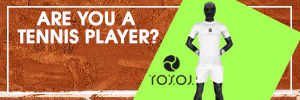

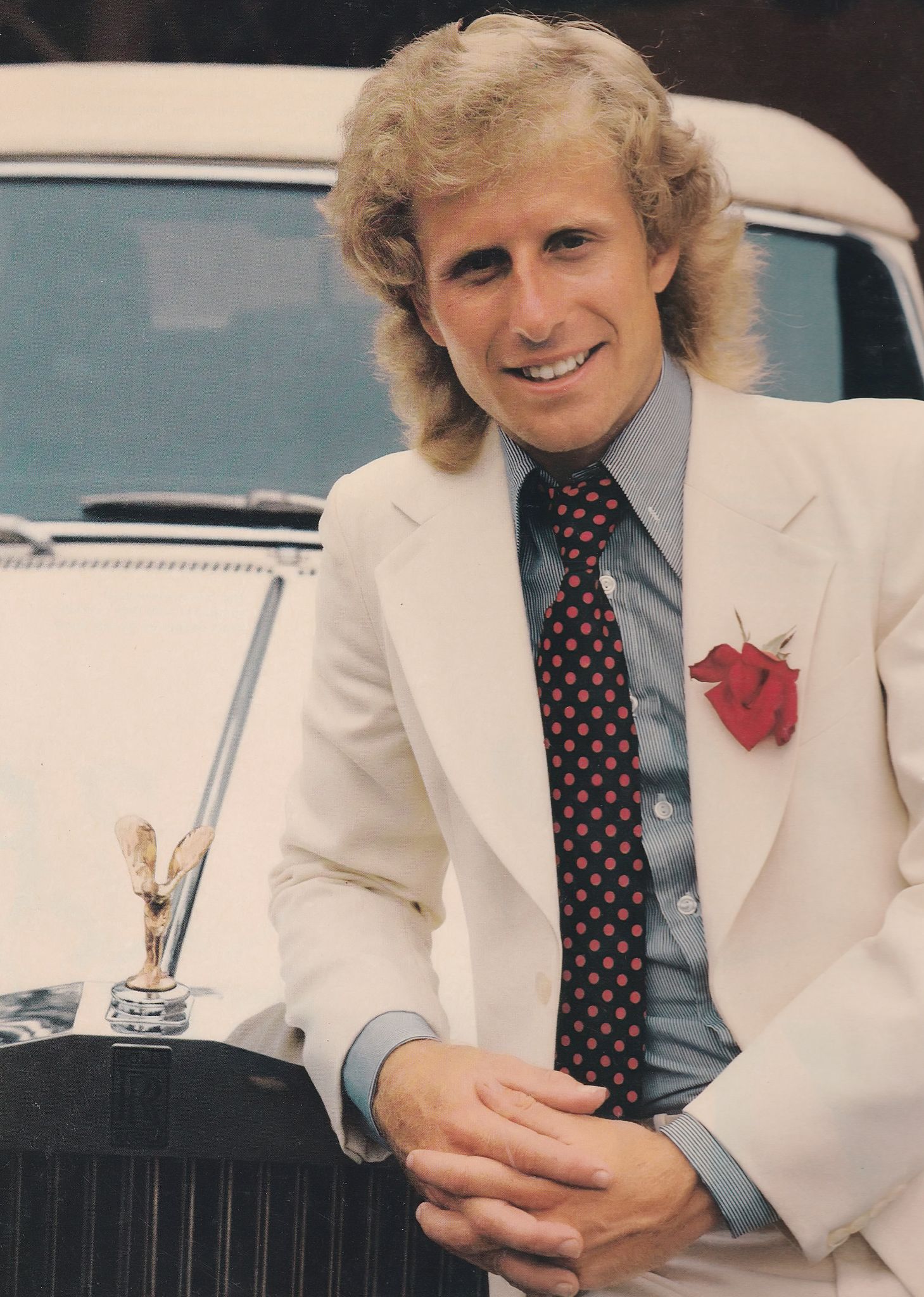
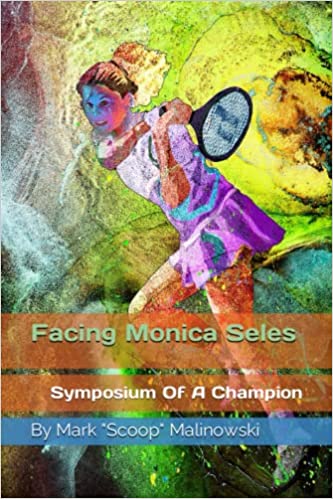
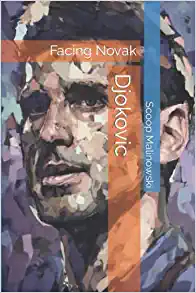
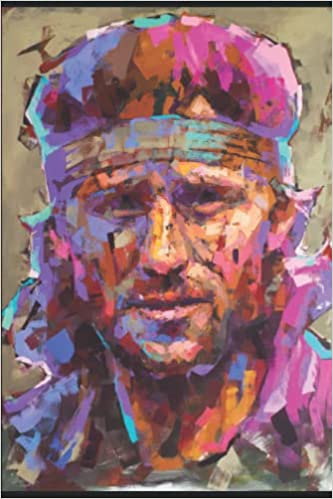
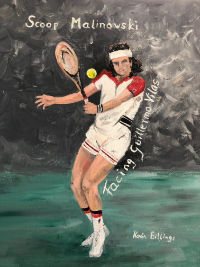
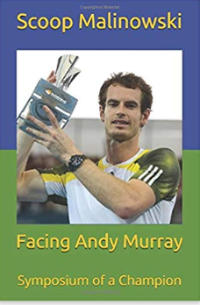
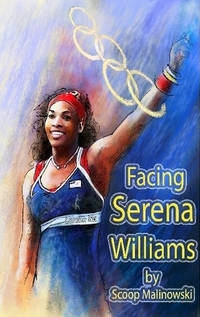
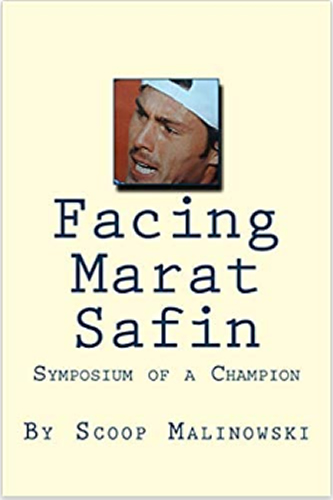
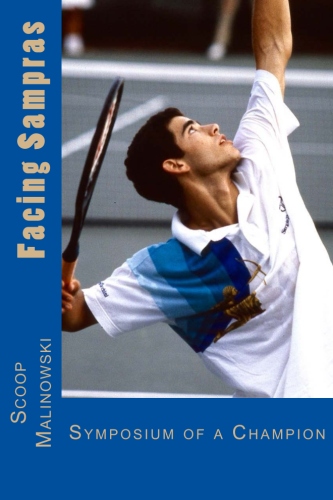
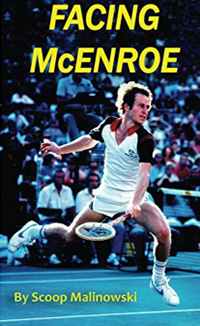
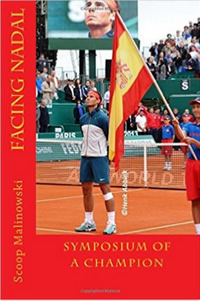
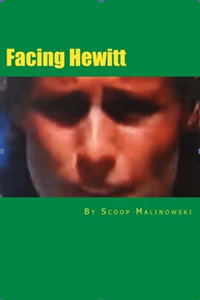
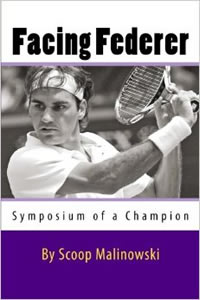
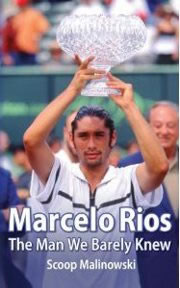

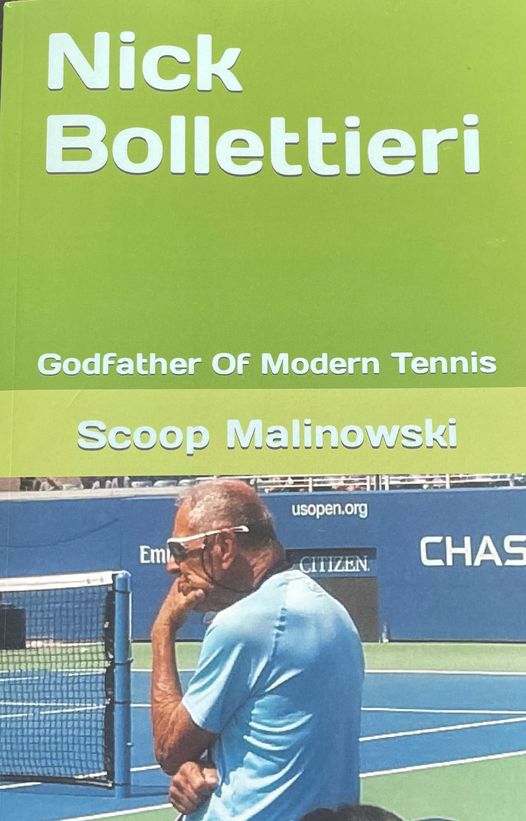

Cory · January 13, 2023 at 12:50 pm
Top-shelf post, Scoop. Bravo.
Scoop Malinowski · January 13, 2023 at 4:37 pm
Thanks Cory, this feature was a lot of work and editing and refining but worth all the efforts, the boss loved it, felt it was better than my first issue feature about Emma’s shock US Open win (which he assigned me to do a feature on Emma two weeks before qualis even started).
catherine · January 14, 2023 at 4:43 am
Tangentially related:
Belinda Bencic won in Adelaide, trouncing Kasatkina 6-0 6-2.
Bencis is now coached by Tursunov. Emma’s ‘people’ may come to regret casting Dimitry adrift. I suspect she wanted to stay with him. Now she’s stuck with another ‘trial’ in Sachs. This method of working isn’t good for anyone.
BTW – Hemingway once claimed he had invented a serve which didn’t bounce. This was the time he was living in Paris and playing fairly regularly. I suspect this ‘bounceless’ serve
owed much to old damp French tennis balls.
Scoop Malinowski · January 14, 2023 at 8:45 am
Catherine, not a surprise Tursunov once again getting instant results and titles with his latest player. Tursunov is the best coach in tennis today, nobody has his consistent successful results with a range of players. Too bad Hemingway didn’t teach his secret serve to the pros of his era or use it to win Wimbledon or Roland Garros )